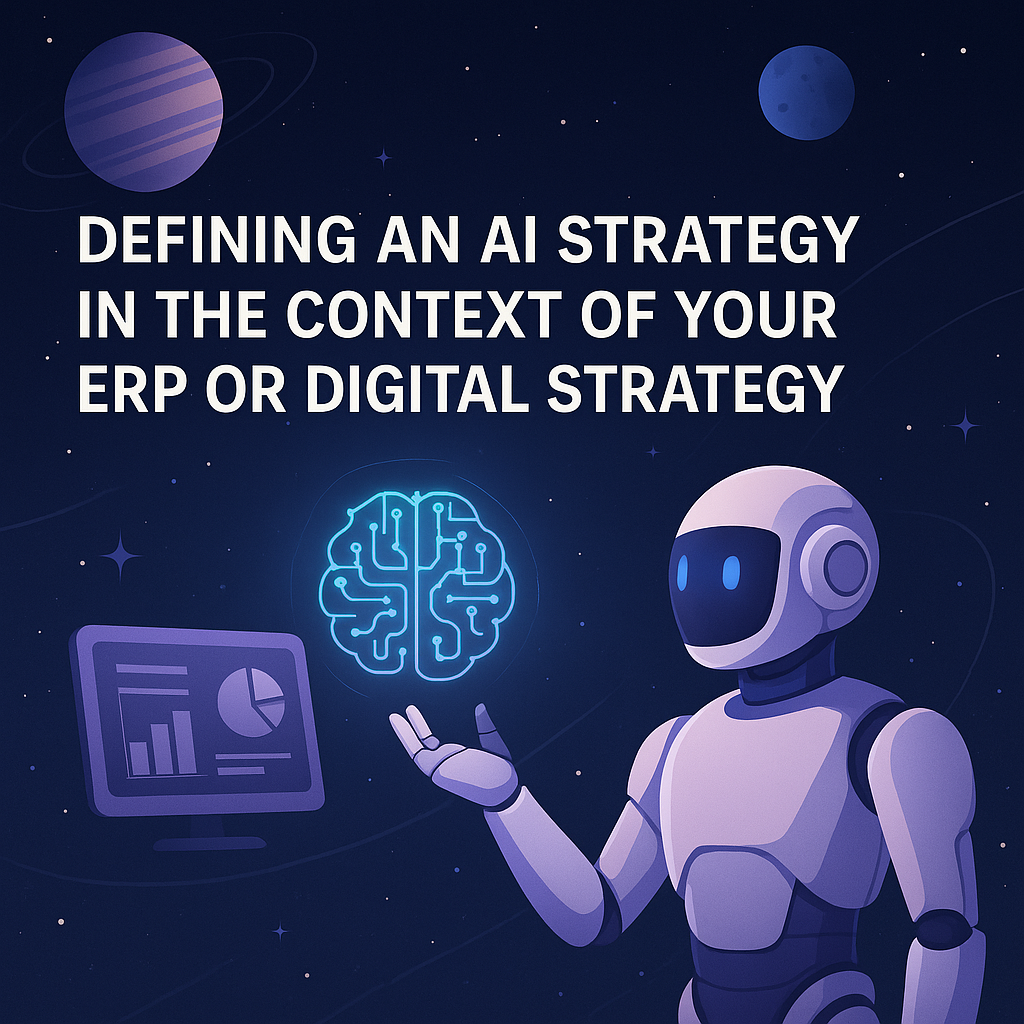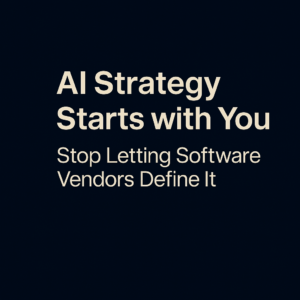As artificial intelligence becomes more prevalent in the enterprise technology space, organizations are increasingly looking to incorporate AI into their digital transformation journeys. But integrating AI into an existing ERP or digital strategy isn’t always straightforward. Many organizations are left wondering: should AI be an extension of their ERP system or a standalone capability? And how should they structure their AI strategies to align with broader business goals?
Here’s a breakdown of how to approach your AI strategy within the larger context of digital transformation.
Table of Contents
ToggleERP-Embedded AI vs. Standalone AI Solutions
One of the first strategic decisions organizations face is whether to leverage the AI tools embedded in their ERP systems or to deploy standalone AI platforms.
ERP systems like SAP, Oracle, Microsoft, and NetSuite are investing heavily in AI capabilities. Leveraging these built-in tools can offer value right out of the box—especially when organizations want faster implementation or lack internal AI expertise.
However, relying solely on ERP vendors for AI functionality can mean missing out on customization and long-term competitive advantage. Standalone AI tools, on the other hand, allow companies to build models around their unique data sets, business processes, and strategic goals. This level of ownership can lead to deeper insights and more powerful automation—but it requires a clear strategy, data readiness, and internal alignment.
The decision ultimately comes down to one word: strategy.
Your Data Is the Foundation
No matter which direction you choose—embedded or standalone—your AI strategy is only as strong as the data that powers it.
Clean, accurate, and well-structured data is a prerequisite for any successful AI implementation. Think of AI as a layer that sits on top of your machine learning models, which in turn rely entirely on high-quality data. If your data is outdated, fragmented, or poorly maintained, your AI outputs will be unreliable and potentially biased.
Organizations need to treat data as a strategic asset. This means investing in data governance, creating clear structures for data management, and understanding where your data resides. Without this foundation, even the most advanced AI tools will fall short.
AI Should Serve the Business Model
A common misstep is deploying AI for the sake of innovation without connecting it back to core business goals. Whether it’s automating manual processes, predicting customer behavior, or improving forecasting accuracy, AI should directly support strategic objectives.
Start by asking key questions:
- What are the business problems we’re trying to solve?
- How can AI enhance our competitive advantage?
- What internal capabilities do we need to support this initiative?
Answering these questions will help define the scope of your AI strategy and determine whether a prebuilt ERP solution or a more customized approach is the better fit.
Change Management Is Not Optional
AI brings a level of disruption that requires thoughtful change management. It’s not just about deploying new technology—it’s about preparing your teams for the transformation that follows.
From employees concerned about job displacement to teams unsure how to work alongside AI tools, change management is the “handshake” between your technology and your people. Organizations must invest in communication, training, and reskilling programs that help employees embrace AI as a tool for empowerment rather than a threat.
AI won’t necessarily eliminate jobs—but it will change them. The organizations that thrive will be those that help their people adapt.
Guardrails, Oversight, and Trust
Trust in AI systems is critical. And trust is built on transparency, data quality, and proper oversight. Left unchecked, AI can produce biased or inaccurate results—especially when trained on questionable or unstructured data sources.
Establishing clear guardrails, auditing mechanisms, and a maintenance plan for AI models helps ensure that your organization can rely on AI insights with confidence. This also reinforces the need for human oversight—AI might be powerful, but it still requires interpretation, judgment, and course correction.
The Bigger Picture: Own Your AI Future
AI is no longer just a tool—it’s becoming a core component of business infrastructure. That’s why organizations should begin thinking about AI as intellectual property (IP). Just like you own your brand, your logo, and your internal processes—shouldn’t you also own your AI?
This doesn’t mean every organization needs a full-blown AI department tomorrow. But carving out even a small space for AI ownership and experimentation—independent from ERP vendors—can set the stage for long-term innovation and strategic flexibility.
Final Thoughts
AI is here, and it’s not going away. But instead of rushing into solutions, organizations should focus on thoughtful strategy, clean data, and internal alignment. Whether embedded in your ERP or built as a standalone capability, AI should support your broader business model—not distract from it.
By defining a clear AI strategy aligned with your digital transformation goals, you can turn uncertainty into opportunity—and use AI as a force multiplier for your organization’s growth.






